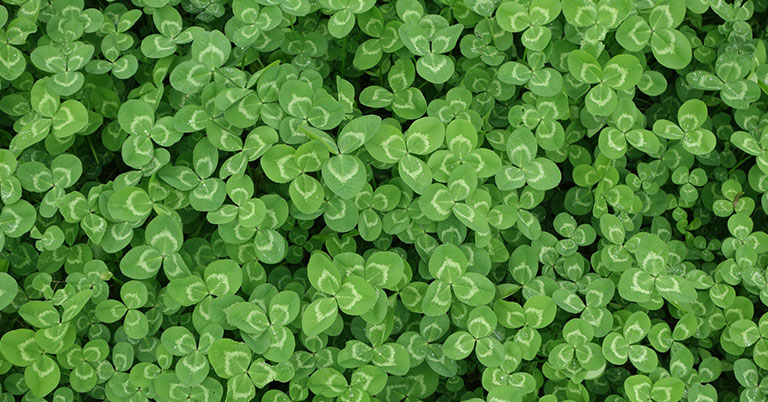Clover (Trifolium spp.) is a common weed that often infiltrates lawns, gardens, and landscapes. While some may appreciate its delicate flowers and nitrogen-fixing properties, others may consider it a nuisance. This article will provide insights into identifying clover, understanding its propagation methods, exploring its benefits, and offer practical strategies for controlling and removing it from your outdoor spaces.
What Does Clover Look Like?
Clover is characterized by several distinctive features. Its leaves typically consist of three leaflets, giving it the classic trifoliate structure. The leaflets are typically oval-shaped and have a smooth texture. When it comes to flowers, clover produces small, clustered flowers that can range in color from white to pink or purple, depending on the species.
In terms of growth habit, clover forms low-growing patches or mats, with creeping stems that can root at the nodes, allowing it to spread and colonize areas quickly.
How Does Clover Spread?
Clover employs several methods to propagate and spread in your outdoor spaces. It primarily reproduces through seeds, which can be dispersed by wind, water, animals, or human activities. These seeds can remain dormant in the soil for years, waiting for favorable conditions to germinate.
Additionally, clover can spread through its creeping stems, which root at the nodes and create new plants. This allows it to quickly colonize bare or thin areas of your lawn or garden.
Should You Get Rid Of Clover?
While clover is often viewed as a weed, it does offer some benefits worth considering. I honestly don’t recommend you get rid of clover if you find it growing in your lawn. One of the notable advantages of clover is its ability to fix nitrogen in the soil. Clover has a symbiotic relationship with nitrogen-fixing bacteria, which enables it to convert atmospheric nitrogen into a form that other plants can utilize.
This natural nitrogen source can enhance the fertility of the soil and promote the growth of surrounding plants. Additionally, clover’s dense growth can act as a natural ground cover, reducing soil erosion and suppressing the growth of other weeds.
How to Get Rid of Clover
If you decide to remove clover from your lawn or garden, there are several effective strategies you can employ. Here are some practical methods for controlling and removing clover:
- Hand Pulling: For small patches or isolated clover plants, you can manually remove them by hand. Ensure that you remove the entire root system to prevent regrowth.
- Mowing and Lawn Care: Regular mowing can help control the spread of clover. Set your mower at a higher cutting height to encourage a thicker and denser grass cover, which can outcompete clover. Additionally, maintaining a healthy lawn through proper watering, fertilization, and aeration can help create conditions unfavorable for clover growth.
- Herbicides: Selective herbicides formulated specifically for broadleaf weed control can effectively target and eliminate clover while sparing desirable grass species. Read and follow the instructions carefully, applying the herbicide when the clover is actively growing.
- Overseeding: Overseeding your lawn with high-quality grass seed can help fill in bare or thin areas, reducing the opportunity for clover to establish itself.
Clover, though often seen as a weed, offers some benefits but can be undesirable in certain landscapes. By recognizing clover’s characteristics, understanding its propagation methods, appreciating its benefits, and implementing effective control strategies, you can successfully manage and remove clover from your outdoor spaces. Select the appropriate methods based on the extent of the infestation and your desired outcome, ensuring a healthy and weed-free lawn or garden.













